June 28, 2024
I am back in London for a month. Three of those weeks will be spent in school, but on my first day, recovering from a long air flight, I simply wandered around. I was staying at the Strand Palace in Westminster and that is where my roaming took me.
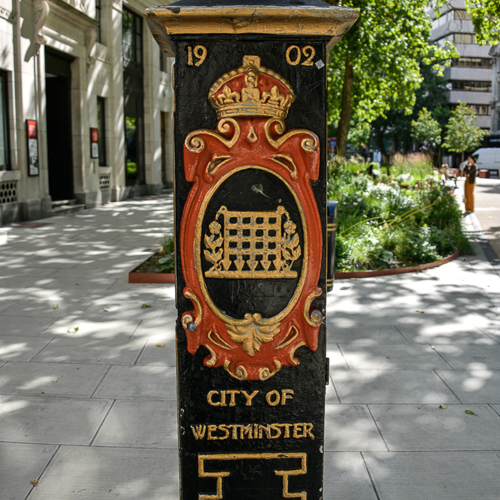
*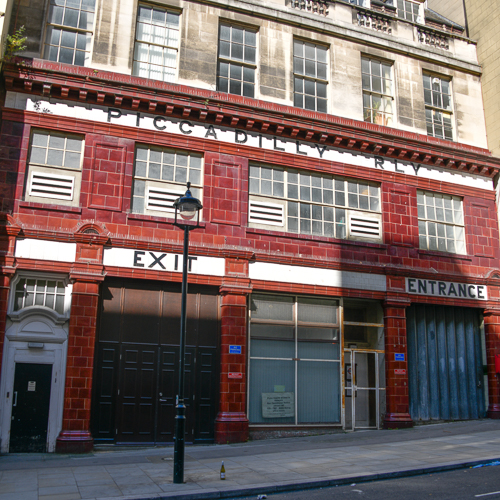
This is actually called Aldwych Station. It has been closed for a very long time but has a wonderful architectural history. It originally opened in 1907 as Strand Station. Construction of the station began in 1905, and the building that once stood here was the Royal Strand Theatre. The red-tiled frontage was the trademark of its architect Leslie Green (1875-1908).
During both World Wars, the empty parts of the station and its tunnels were used to shelter artwork from London’s public galleries and museums including the Elgin marbles, as well as the general public from the Blitz bombing.
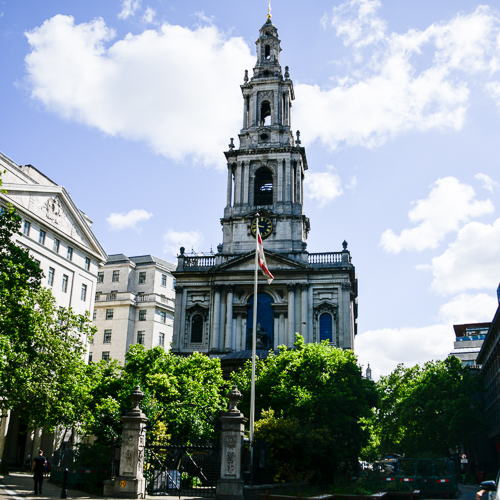
St Mary Le Strand
The construction of the new St Mary le Strand began in February 1714 under the architect James Gibbs. The steeple was completed in September 1717, but the church was not consecrated until 1724. It is the official church of the Women’s Royal Naval Service.
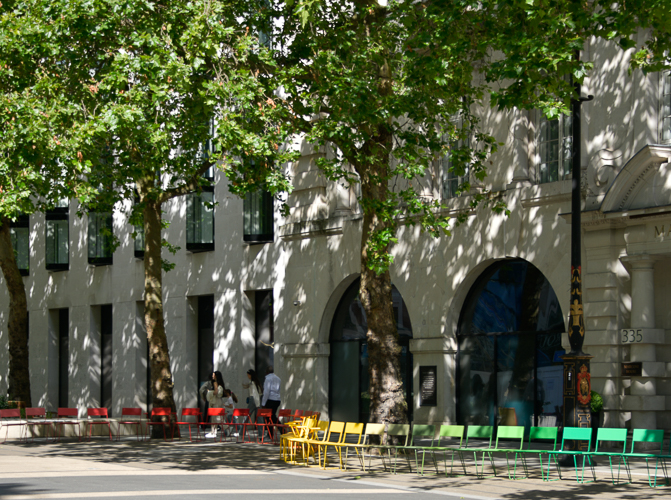
A rainbow of chairs in the carless area in front of St. Mary Le Strand
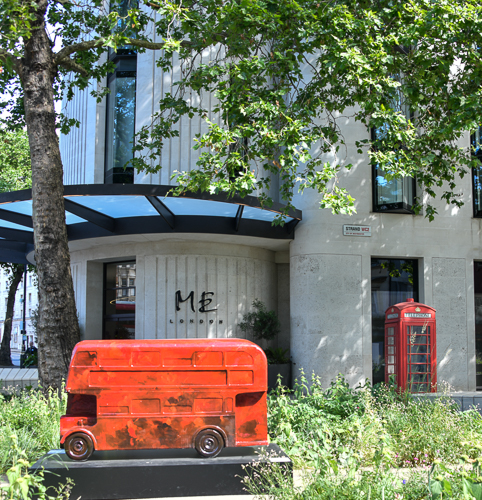
Random Public Art in front of the ME Hotel near St. Mary Le Strand
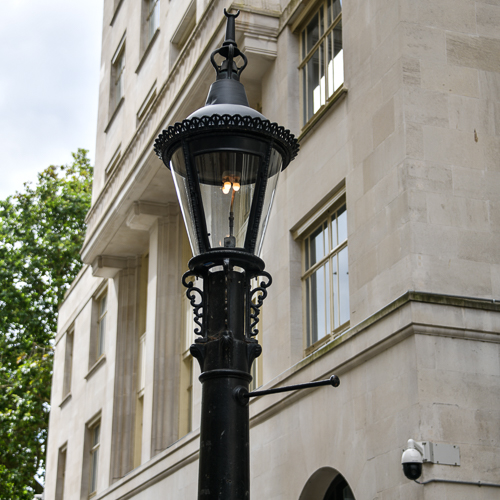
The Carting Lane Sewer Light
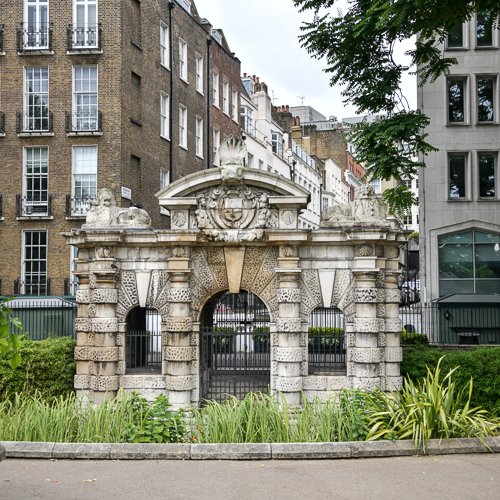
York Watergate
At one end of the Victoria Embankment Gardens between the Savoy and the Thames you will find the York Water Gate.
The gate was built in 1626 as part of the York House, one of the mansions along the Thames. It was commissioned by George Villiers, the first Duke of Buckingham.
When built the watergate sat at the northern edge of the Thames. Boats would drop off passengers in the mansion’s back garden.
In the mid-19th-century, the UK government decided to build the Victoria Embankment. Thus changing the course of the river and leaving the watergate 150 yards from the water’s edge.
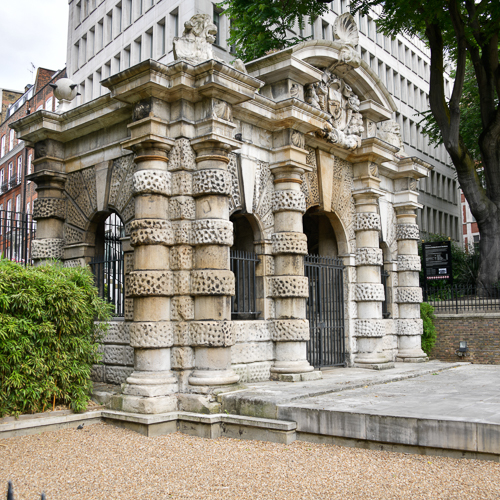
*
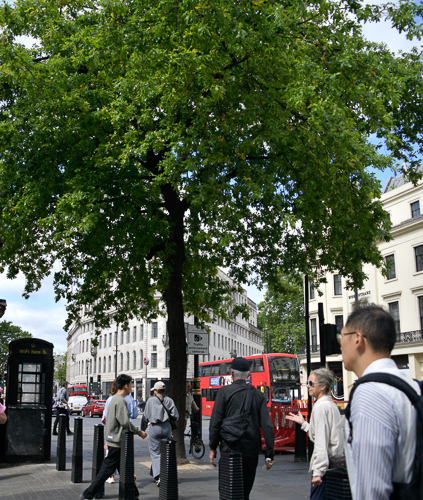
Charing Cross
This random tree on the sidewalk outside Charing Cross is absolutely uninteresting, again, if it weren’t for a little sign nearby.
On October 16, 1987, in the “Great Storm” England lost 15 million trees within a few hours. In London, nearly 100 mph winds took down 250,000 of the city’s trees. The Evening Standard created a campaign to replant trees throughout the city and this was one of them.

*
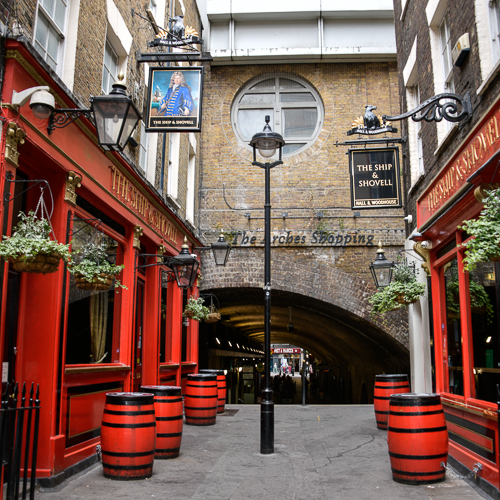
A great, colorful scene in the area of Charing Cross Station
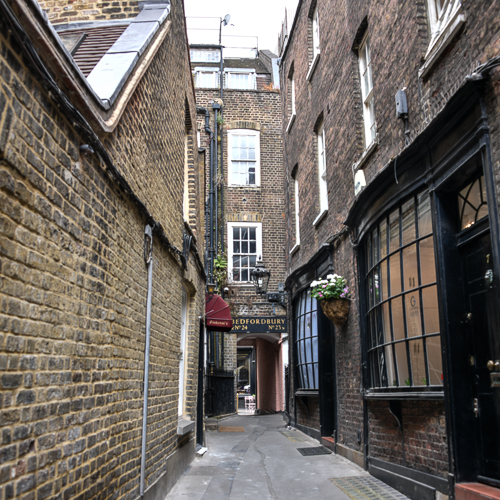
Goodwins Court
Originally Fishers Court, this area was built in the 1600s and was first mentioned in official books in 1690. I was charmed by the bowed front shop windows.
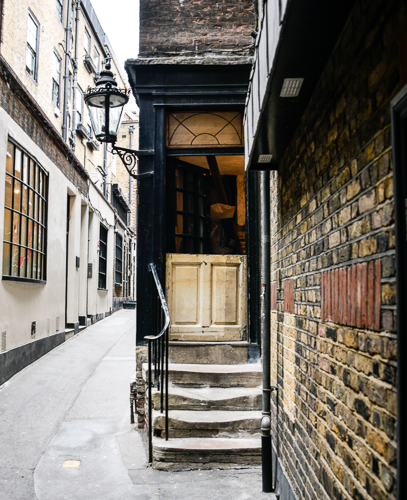
Goodwins Court – look at those well-worn stone steps.
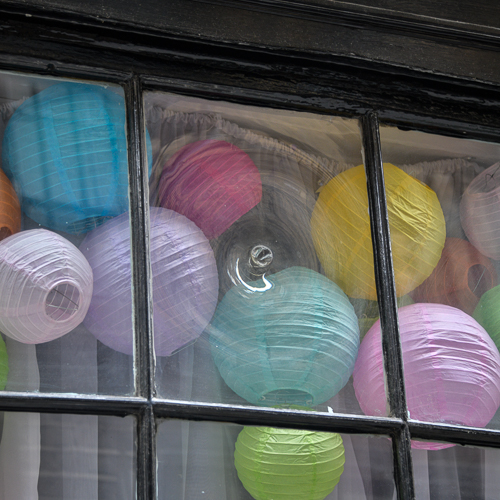
Every store front had at least one pane of bullseye glass, why I have no idea.
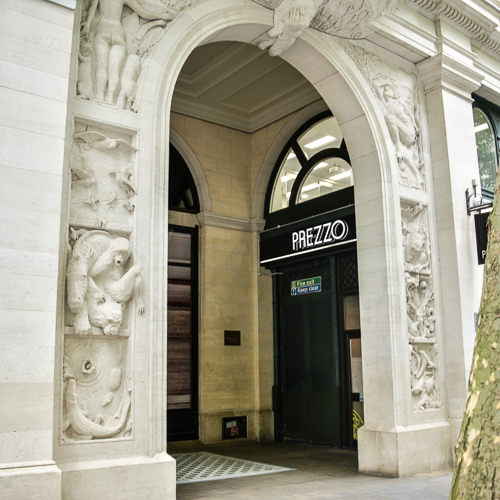
In front of a bookstore just off of Trafalger Square is this unique arch. It is the work of sculptor Barry Baldwin and is titled Endangered Species.
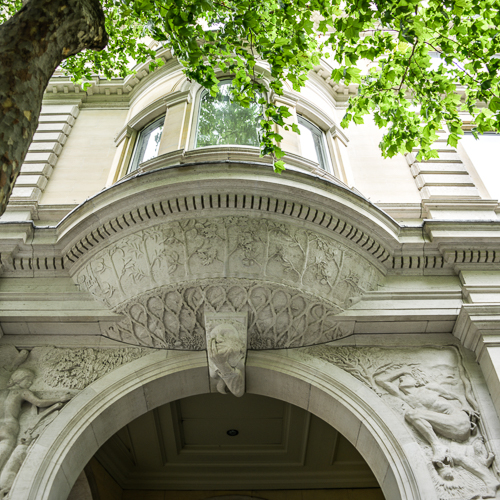
The arch depicts 70 animals at risk of extinction. At the top are Adam and Eve, bookending a central figurehead sporting a wristwatch set at the eleventh hour.
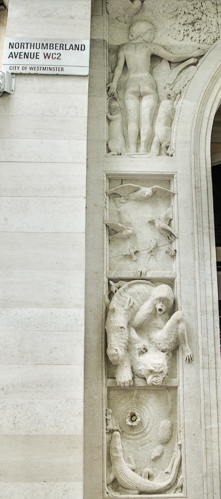

*
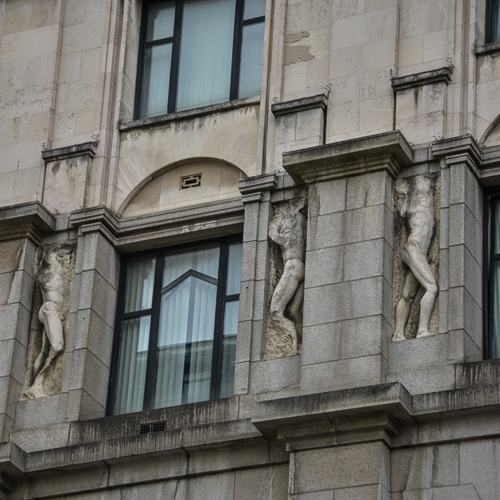
These sadly dissolving figures were quite the scandal at the time they were carved. They sit on what is now the Zimbabwe Building on The Strand that, at the time of the sculptures was once the headquarters of the British Medical Association.
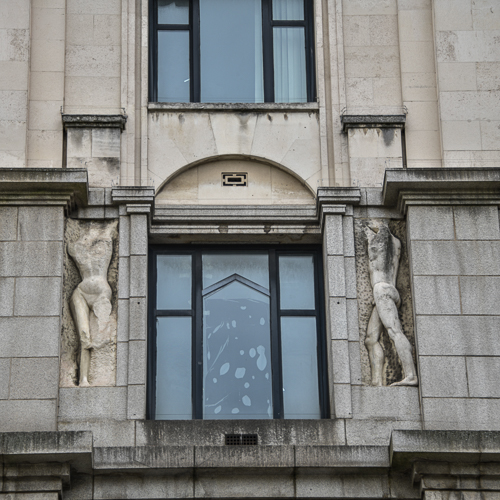
There are 18 of these, all sculpted by Jacob Epstein. While nothing one would consider odd today, their nakedness and body positions were rather “racy” for the Victorian era when they were done.
Epstein was originally from Eastern Europe and moved to New York in 1880.
In 1905, Epstein moved to London from Paris, where he became heavily involved in The London Group, a cutting-edge group of artists of the time.
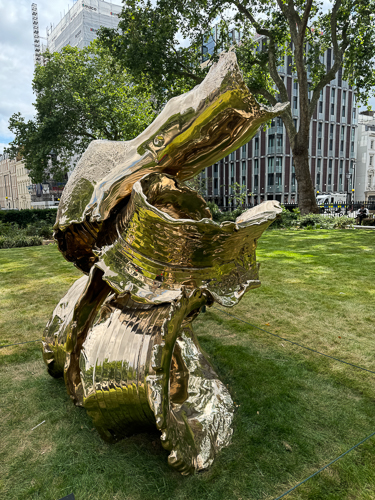
Lynda Benglis Power Tower (2019)
This is one of several Power Towers by Benglis found around the world. This one sits in Cavendish Square.

This statue of George Orwell (Martin Jennings 2017) sits in a very large open plaza of the BBC Headquarters. It says “If liberty means anything at all it means the right to tell people what they do not want to hear.”
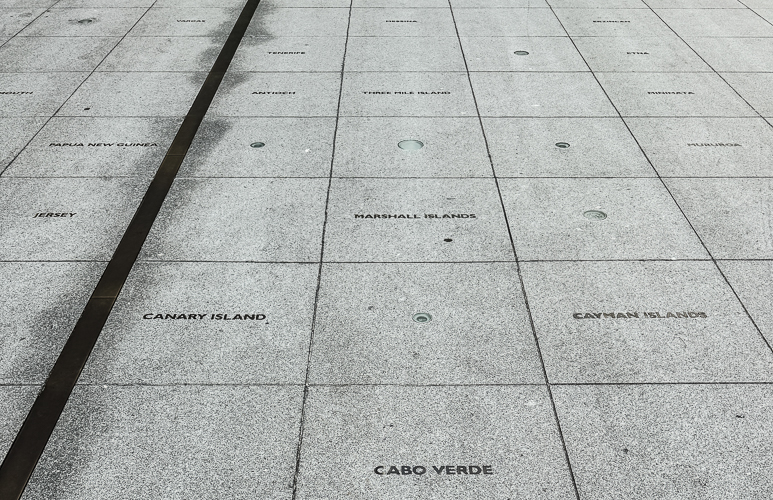
World was created by the Canadian artist Mark Pimlott. Its surface describes an imaginary fragment of the globe, marked with lines of longitude and latitude and the names of hundreds of places. The names inscribed on the pavement have been chosen and positioned by the artist based on his personal knowledge, memories, and fantasies. As the visitor walks across its surface, he or she is likewise invited to think about how they make sense of the world.
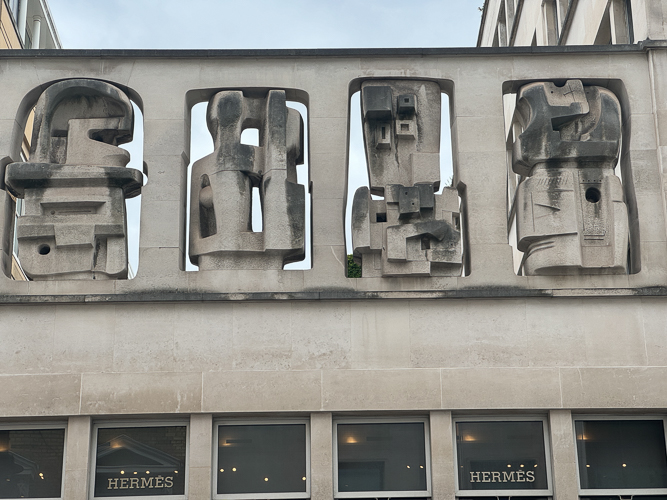
Henry Moore’s Time-Life Screen
I am a huge Henry Moore fan, so when I walked by this building on Bond Street and looked up, I was thrilled. Apparently, when Henry Moore started on the Time-Life Screen for the Time-Life Organization, he saw it as an exciting problem to solve. He thought the screen should look like it was part of the architecture since it is part of the building, at the same time the sculptures should be projected from it as if they were escaping.
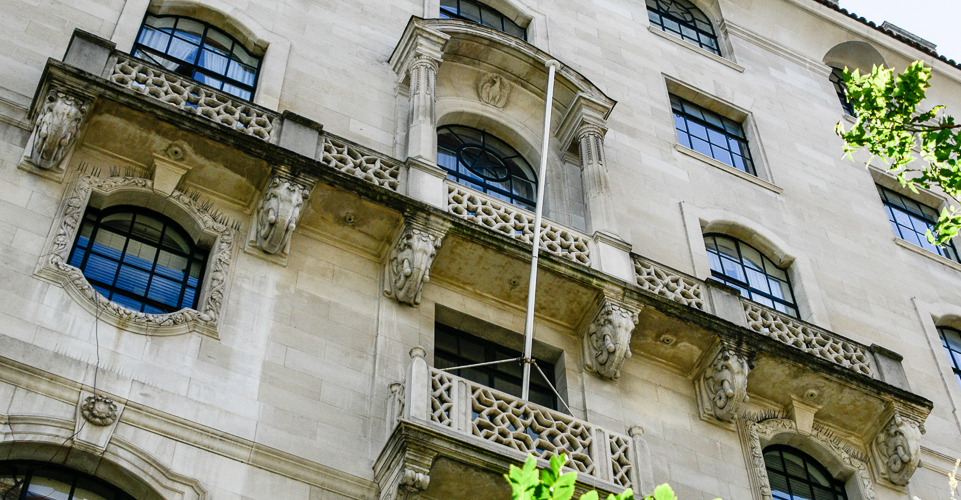
These elephants sit on the underside of a balcony on India House on India Place. Designed by Sir Albert Baker in 193o.
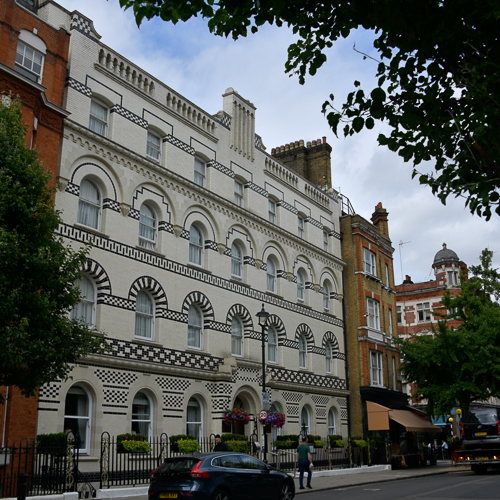
The Howard De Walden Nursing Home on Langham Street
I was charmed by this black and white building when walking to Kibako Japanese restaurant on Great Portland Street.
The building dates back to 1901, at the very end of Victoria‘s reign, when it was built as a nursing home. It was designed by A.E. Thompson and developed by Baron Howard De Walden at the behest of his mother. Florence Nightingale helped in the design of the building, and it is said she was “anxious to have the Nurses Home as nearly perfect as a building can be.”
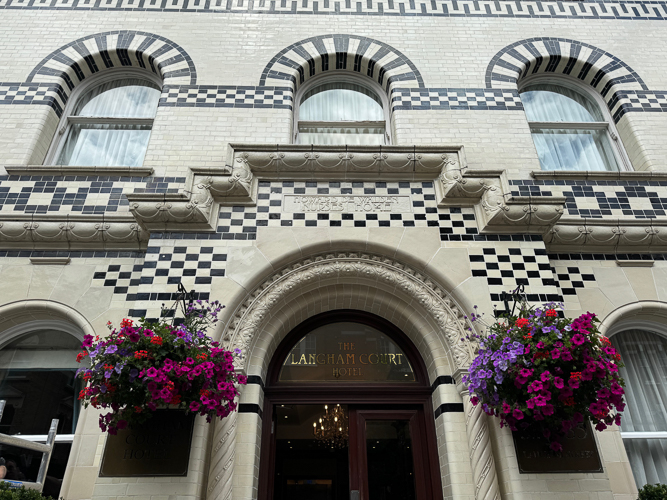
*
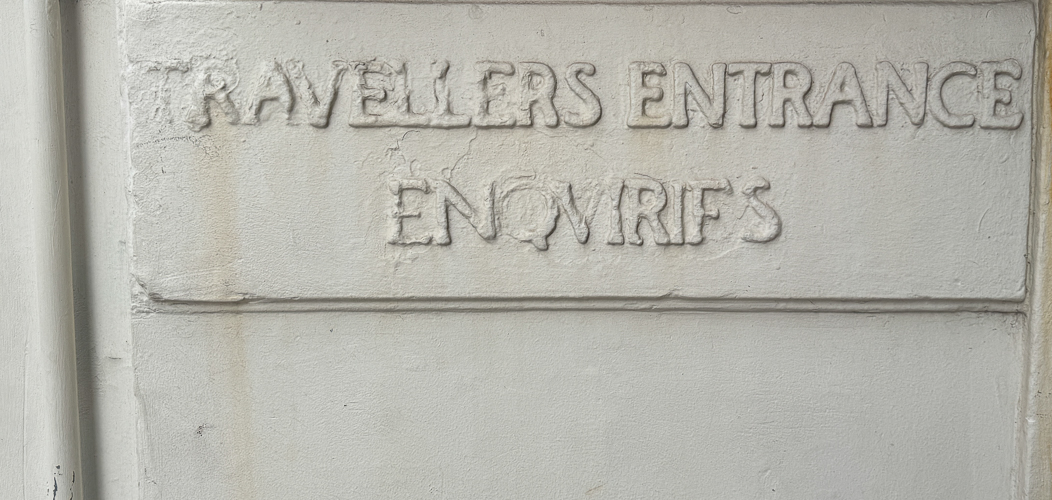
A random sign off of a Mews
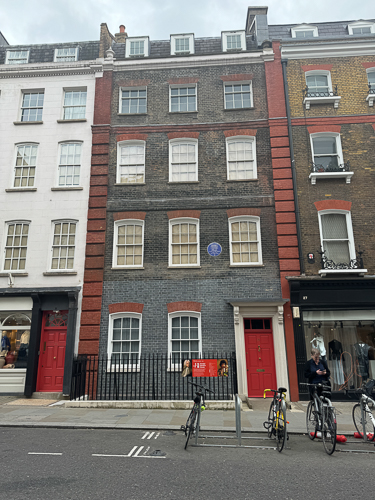
The Joseph Haydn/ Hendrix House – newly renovated with Jimi Hendrix apartment, as it was on the top floor.
That was my first day in London, it is great to be back in this town with so much great architecture, art and especially history.